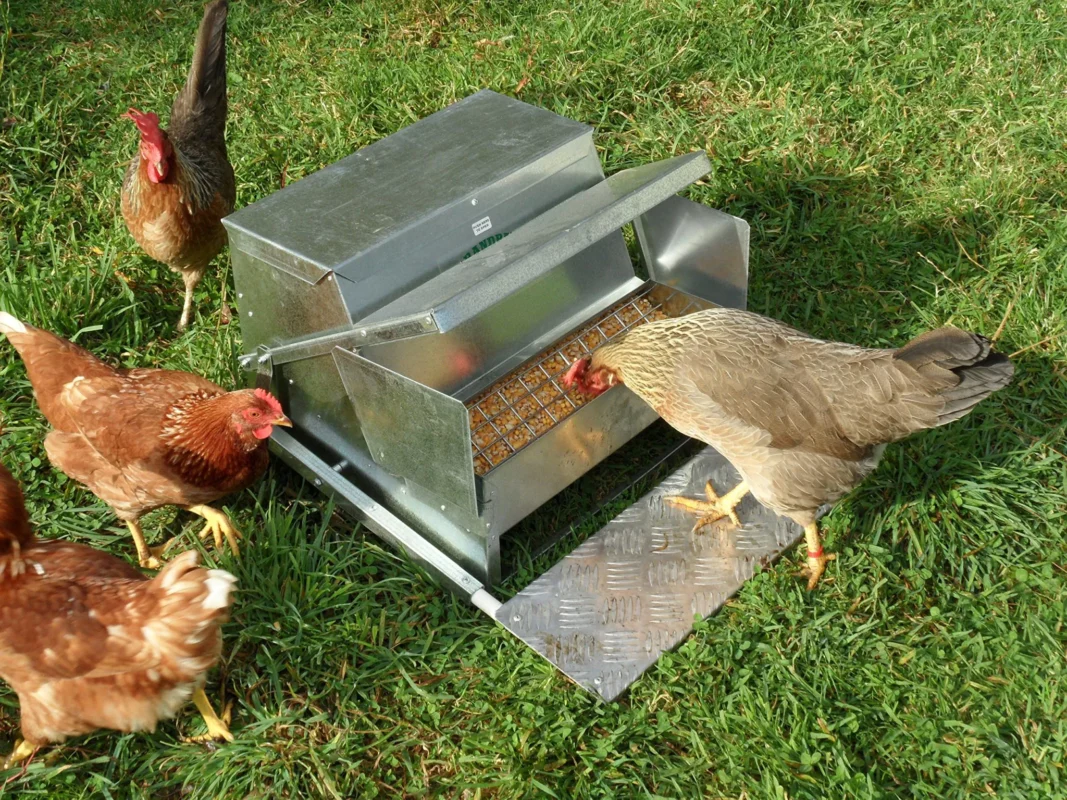Farmstead Chronicles
Cultivating Abundance: Key Steps to a Sustainable Homestead Lifestyle
Start Doing These Things to Thrive and Prosper on the Homestead
Homesteading is more than just living off the land—it’s about creating a sustainable, fulfilling, and prosperous lifestyle. Whether you’re just starting or looking to improve your current setup, here are key things you should start doing to thrive and prosper on the homestead.
1. Prioritize Soil Health
Imagine your soil as a living entity, teeming with microorganisms that dance beneath the surface, nurturing your plants from the roots up. Healthy soil is the cornerstone of a bountiful homestead.
-
Composting: Begin by collecting kitchen scraps—think vegetable peels, coffee grounds, and eggshells—and yard waste like leaves and grass clippings. Layer these materials in a compost bin, turning the pile regularly to introduce oxygen. Over time, this heap transforms into black gold, enriching your soil with nutrients.
-
Crop Rotation: Picture your garden as a stage where different plant families take turns in the spotlight each season. By rotating crops—such as planting legumes where tomatoes once grew—you prevent soil depletion and disrupt pest and disease cycles, ensuring a dynamic and resilient garden.
-
Cover Crops: During off-season periods, sow cover crops like clover or rye. These green guardians protect your soil from erosion, suppress weeds, and, when tilled back into the earth, enhance soil structure and fertility.
Recommended Product: Organic Compost Starter
2. Diversify Your Food Production
A diverse homestead is a resilient one, offering a medley of flavors and products that cater to both your table and your community.
-
Perennial Plants: Invest in the future by planting fruit trees, berry bushes, and perennial herbs. These plants require less maintenance over time and provide continuous yields, painting your landscape with both beauty and sustenance.
-
Livestock Integration: Introduce animals like chickens or goats to your homestead. Chickens offer fresh eggs and natural pest control, while goats provide milk and help manage vegetation. Their manure enriches your compost, creating a harmonious cycle of nourishment.
Amazon Pick: Fruit Tree Starter Kit
3. Save Seeds for Self-Sufficiency
Seed saving is akin to holding hands with generations of gardeners before you, preserving heritage and ensuring future harvests.
-
Heirloom Varieties: Cultivate open-pollinated heirloom plants known for their rich flavors and adaptability. Saving seeds from these plants means each generation becomes more attuned to your local environment.
-
Seed Libraries: Engage with local seed exchange programs or libraries. Sharing seeds fosters community bonds and introduces you to a wider variety of plants, enriching your garden’s biodiversity.
Best Resource: Seed Storage Box
4. Master Food Preservation Techniques
Preserving your harvest allows you to enjoy the fruits of your labor long after the growing season has passed.
-
Canning: Through water bath or pressure canning methods, seal fruits, vegetables, and meats in jars. This process not only extends shelf life but also locks in flavors, allowing you to savor summer’s bounty in the heart of winter.
-
Dehydrating: Remove moisture from foods like herbs, fruits, and meats using a dehydrator or oven. Dehydrated foods are lightweight, space-saving, and retain much of their nutritional value—a perfect snack or soup addition.
-
Fermenting: Harness the power of beneficial microbes to transform foods into probiotic-rich delicacies. Fermenting cabbage into sauerkraut or milk into yogurt not only enhances flavors but also supports gut health.
Must-Have: Canning Starter Kit
5. Implement Water Conservation Strategies
Water is a precious resource, and conserving it ensures your homestead remains lush and productive.
-
Rainwater Harvesting: Install gutters and downspouts leading to rain barrels or larger cisterns. This collected water can irrigate gardens, reducing reliance on municipal supplies and lowering your water bill.
-
Drip Irrigation: Set up drip lines or soaker hoses that deliver water directly to plant roots. This method minimizes evaporation and ensures plants receive consistent moisture, promoting healthier growth.
Top Pick: Rainwater Collection Barrel
6. Develop a Sustainable Energy Source
Transitioning to renewable energy reduces your carbon footprint and fosters independence from non-renewable resources.
-
Solar Power: Install photovoltaic panels on your property to capture sunlight and convert it into electricity. This clean energy source can power your home, tools, and appliances, often with surplus to store or share.
-
Wind Turbines: If your area boasts consistent winds, consider erecting a small-scale wind turbine. This addition can complement solar power, especially during overcast or shorter daylight periods.
Amazon Deal: Off-Grid Solar Power Kit
7. Raise Chickens for Eggs, Meat, and Pest Control
Chickens contribute in multiple ways, including:
- Producing fresh eggs and meat.
- Scratching up weeds and eating pests.
- Fertilizing the soil naturally.
Diversifying income sources not only stabilizes your finances but also enriches your homesteading experience.
-
Farmers Markets: Package your surplus produce, eggs, or handmade crafts and set up a stall at local markets. Engaging with your community in this way fosters relationships and provides valuable feedback on your products.
-
Workshops and Tours: Share your knowledge by hosting workshops on gardening, animal husbandry, or food preservation. Opening your homestead for tours can also educate and inspire others, creating additional revenue streams.
-
Chicken Keeping Guide: Automatic Chicken Feeder
8. Building a Supportive Community: Strength in Connections
A thriving homestead flourishes within a network of like-minded individuals offering support, knowledge, and camaraderie.
-
Local Networks: Join or establish groups focused on sustainable living. Regular meetings, skill swaps, and collaborative projects can amplify your efforts and create lasting friendships.
-
Online Forums: Participate in digital communities where homesteaders worldwide share experiences, challenges, and successes. These platforms can be a wellspring of inspiration and practical advice.
Essential Item: Homestead First Aid Kit
9. Developing Multiple Income Streams: Cultivating Profitability on the Homestead
A thriving homestead isn’t just self-sufficient—it can also be a source of income. Consider the following avenues:
-
Agricultural Products: Sell surplus produce, eggs, meat, or homemade goods at local farmers’ markets or through community-supported agriculture (CSA) programs. The Prairie Homestead
-
Agri-Tourism and Educational Services: Offer farm experiences, workshops, or Airbnb stays to share your homesteading lifestyle and knowledge with others.
Digital Content Creation: Monetize a homestead blog, YouTube channel, or online store by sharing your experiences, tutorials, and products with a broader audience.
10. Continuous Learning: The Backbone of Homesteading Success
Homesteading is an ever-evolving path, with each season presenting new lessons and opportunities for growth. To stay adaptable and informed:
-
Workshops and Courses: Enroll in classes covering topics like permaculture design, renewable energy systems, or traditional crafts. Continuous learning keeps your skills sharp and adaptable.
-
Literature: Dive into books and publications on sustainable practices. The wisdom contained in these resources can offer new perspectives and techniques to enhance your homesteading journey.
By intertwining continuous education with diversified income strategies, your homestead can flourish both as a self-sustaining entity and a profitable venture. Embrace the journey of learning and innovation to fully realize the potential of your homesteading lifestyle.
Start Here: How to Make Money Homesteading
Bonus: Stay Educated and Adaptable
The most successful homesteaders never stop learning. Keep up with:
- Books, podcasts, and YouTube channels about homesteading.
- Workshops on farming, beekeeping, or off-grid living.
- Experimenting with new methods to improve efficiency.
Best Read: The Self-Sufficient Life and How to Live It
📦 Get the Best Deals & Fast Shipping with Amazon Prime!
Want to save time and money on homestead essentials? Sign up for Amazon Prime here for:
✅ FREE 2-Day Shipping on farm supplies & tools
✅ Exclusive Discounts on homesteading gear
✅ Prime Video & Kindle Books for educational resources
Try Amazon Prime FREE for 30 Days!
Your Next Steps!
Which of these will you start implementing first? Comment below and let’s keep growing together!
To stay connected and updated with our latest content, tutorials, and homesteading tips, follow us on our social media platforms:
- Facebook: PLR and Goods
- Instagram: @plrandgoods
- Pinterest: PLR and Goods
- YouTube: PLR and Goods Channel
- TikTok: @plrandgoods
For more resources and information, visit our website: PLRandGoods.com
Like! Share! ➤ Save for Later!
Amazon Affiliate Disclaimer:
This post contains affiliate links. If you purchase through these links, I may earn a small commission at no extra cost to you. This helps support my work in providing valuable homesteading content. Thank you!
